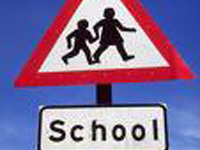American Schools Continue to Fall Behind
When Sputnik majestically crossed the skies back in October 1957, many Americans were quite troubled. They started to ask questions about the failures of the American educational system. Americans considered that Russian science and technology were surpassing their own.

Just about the same time, Arther Trace Jr.’s What Ivan Knows That Johnny Doesn’t, compared the obviously top-notch Russian textbooks to the vacuity of Dick and Jane readers in American schools. By the 4th grade, Trace wrote, Russian children’s reading vocabulary was nearly 10,000 words, while their peers in American schools had been exposed to a carefully controlled vocabulary of fewer than 1,800 words.
Scholastic Aptitude Test scores have dropped consistently each year from the year 1963. As a result of ever decreasing literary skills, even college textbooks are being rewritten at a lower grade level so that the students can understand them. Most newspapers and magazines are written at about a sixth grade level which is now the reading level of the average American. This is a shameful situation.
School violence is also an alarming trend. Back in 1940 the top offenses in public schools were chewing gum, talking in class, unfinished homework, and running in the halls. Today the top offenses are drugs, drunkenness, assault, murder and rape.
Most educational leaders acknowledge that there are problems with American public schools. Most of their suggested solutions involve spending more money.
However, in the past few decades, the public education system has dramatically increased its expenditures. Despite all this spending, educational skills have continued to decrease.
Massive amounts of money have been poured into constructing new schools. But more often than not, substandard contractors are used who nonetheless are paid top dollar for their services. It is also not uncommon for repairs such as new roofs on old buildings to start leaking the first time there is a heavy rainfall.
Most recently, it has been reported that one out of every five American school children today is diagnosed with a learning disorder and most are placed on Ritalin or similar medications. While ADHD and learning disorders may be over diagnosed, there is no question that many children are suffering from various maladies. Many children arrive at school hungry. Many children grow up in poor homes, most often single parent homes. Many times parents notice that their child’s grades go from C or D to A after a few months when they are placed on a program aimed at nutritional balance.
The breakdown of the family, poor health, lack of even basic health insurance and new economic realities present challenges to the American educational system. Roughly 45 million Americans are without health insurance. Clearly, many changes are needed. Some changes are simple, like keeping the schools open until 6 PM for the convenience of working parents. Other changes are far more difficult because they challenge long-accepted ways of doing things.
College affordability continues to deteriorate for most American students and their families. For the most part, higher education remains a luxury for those who can afford it. Financial aid for qualified students who can’t afford college has failed to keep pace with tuition increases. Americans are falling behind young people of other nations in college enrollment and completion rates.
The likelihood of a 9th grader enrolling in college four years later is less than 40%; and that likelihood has decreased from 44% to 32% in Hawaii; from 46% to 35% in Vermont; and from 45% to 37% in New York. Gaps between ethnic groups in college enrollment rates persist. For example, enrollment rate for white 18-to-24 year-olds in Colorado are 40% and 17% for non-whites; in New Jersey, 47% for whites and 27% for non-whites; in Pennsylvania, 39% for whites and 21% for non-whites.
The U.S. has made little or no progress in the areas of college access and completion. Several nations have overtaken the U.S. in college access and others are close behind. In rates of college completion, the U.S. ranks in the bottom half in the most recent international comparisons. It should be the right of every individual to a college education without having to worry about how they might be able to afford it. It is evident that American Schools could benefit from studying other more successful models.
Lisa KARPOVA
PRAVDA.Ru
USA/CANADA
Subscribe to Pravda.Ru Telegram channel, Facebook, RSS!




